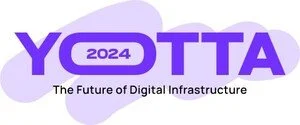Five Key Takeaways from YOTTA 2024
Yotta 2024 boasted the latest advancements in data center technologies, addressing key challenges such as energy consumption, digital transformation, and the integration of renewable energy.
Keyfive’s head of sales Germán Cueva attended the talks and networking events at the conference, yielding great insight into challenges and cutting-edge developments on the horizon for AI, data, computing, and society as a whole. And one thing was made clear: prioritizing energy efficiency, sustainability and advanced integration technologies within data center infrastructure will be pivotal to our transition into the next digital age.
To understand more, check out Germán’s five key takeaways from Yotta 2024:
Key Takeaway #1 – We Need More Power
The energy supply is the primary constraint for data centers. Current grids will not be able to provide enough power to meet the growing demands of the next generation of AI workload data centers.
Key Takeaway #2 – Renewable and Nuclear Power Offer Sustainable Solutions
To reduce strain on the grid, speed up deployments and promote efficiency, data centers need onsite power generation. And attractive and controversial opportunities exist in both renewables and nuclear.
Some suggest data centers should be built with or near existing geothermal, wind, solar, or nuclear powerplants to reduce challenges in energy transmission and system deployment. Within these solutions, geothermal and nuclear energy offer particularly significant benefits due to their continuous, stable and clean power generation.
Establishing appropriate and sustainable power sources for future data center projects could undergo years of analysis and approval. In the meantime, developers are also exploring flexibilities with batteries and virtual utility – immediate solutions Keyfive is well positioned to assist in integrating.
Key Takeaway #3 – “AI Doesn’t Care Where It Goes to School” - Jensen Huang, CEO of Nvidia
While choosing the best power source for future data centers faces heavy constraints in terms of space and location, developers have some flexibility in powering AI. AI models don’t require a specific location for training — they primarily rely on significant compute power during their training phase. Once trained, inference queries require far less compute power and energy.
Because of this, developers can prioritize AI model training at sites with abundant and less-constrained resources. Then, transfer the fully trained models to data centers closer to population centers to optimize latency and performance.
Key Takeaway #4 – Data Center Energy Infrastructure Must Also Account for AI Chip Production
Traditional CPUs and GPUs, while cost-effective and well-supported, may not deliver the energy efficiency required for future power demand. Next-gen data centers will require specialized semiconductors tailored for AI workloads, like Google’s Tensor Processing Units (TPUs). Adopting alternative processing architectures, like Ampere’s ARM architecture processors, and enhancing the energy efficiency of compute hardware will be crucial to overcoming power constraints.
Key Takeaway #5 – Compliance Will be Top Priority with Sovereign AI
Future data and AI computing infrastructures can be protected through sovereign AI, or systems that are developed, maintained and controlled by a specific nation or entity. This ensures the data, algorithms and decision-making processes are fully owned and managed within the jurisdiction. Sovereign AI helps mitigate reliance on foreign AI technologies, reducing risks related to national security, economic dependence, and regulatory conflicts.
This approach impacts how data centers need to be designed, with power, compute, and cooling requirements varying based on specific use cases and regulatory constraints. For best results, compliance measures should also leverage cross-system automation, intelligent and analytics technologies.
Kefive is Committed to Sustainable Data Center Development
In conclusion, the future of energy management for data centers hinges on advanced integration and automation technologies. Keyfive’s solutions stand at the forefront of this transition, enabling businesses to seamlessly integrate complex operating systems while automating energy responses and compliance reporting. By offering real-time insights and adaptive controls, Keyfive empowers data centers to efficiently manage power demands, incorporate renewable energy, and optimize performance—all critical for sustaining the next generation of AI-driven workloads and meeting regulatory requirements in an increasingly digital world.


